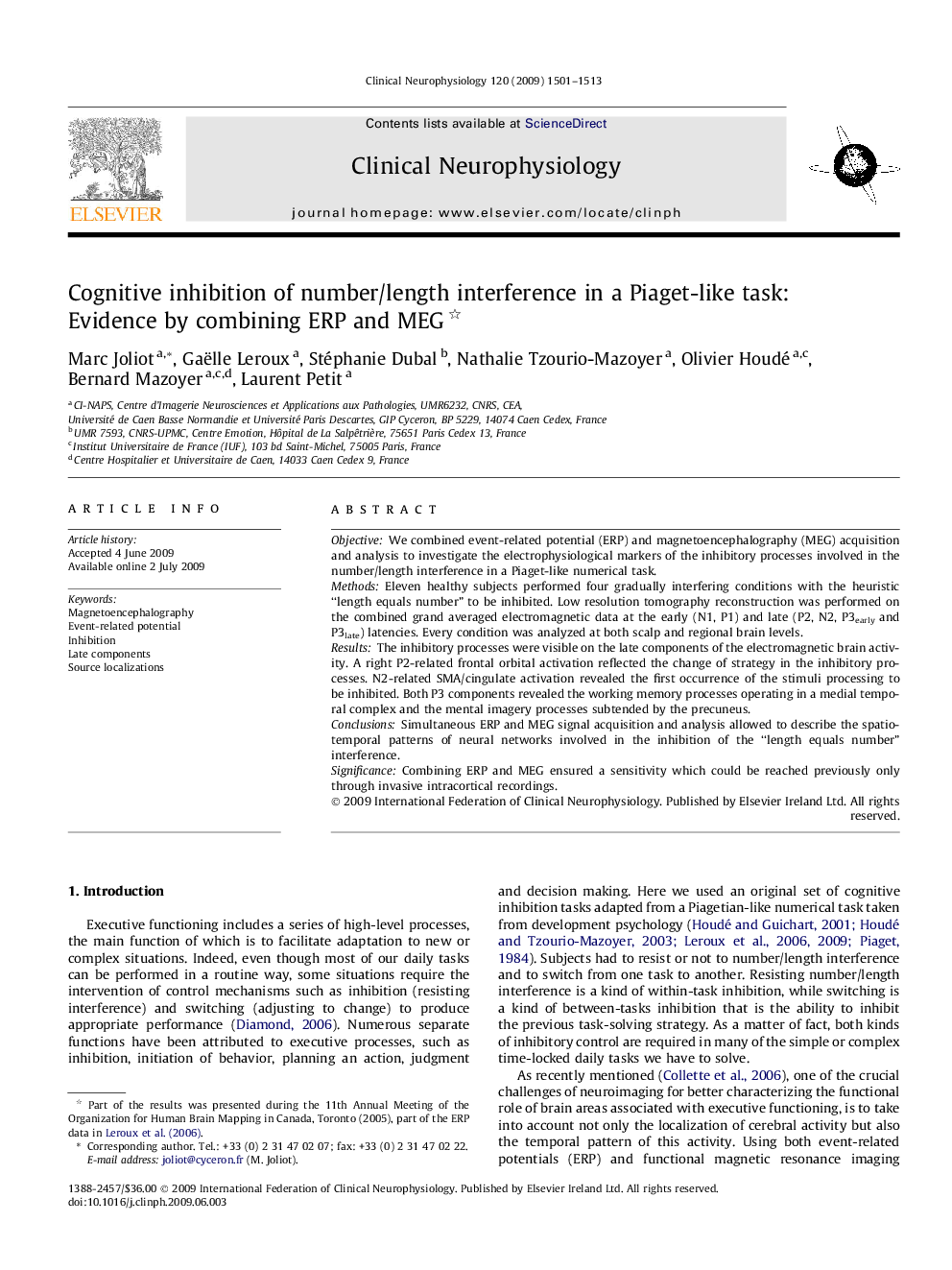| Article ID | Journal | Published Year | Pages | File Type |
|---|---|---|---|---|
| 3046277 | Clinical Neurophysiology | 2009 | 13 Pages |
ObjectiveWe combined event-related potential (ERP) and magnetoencephalography (MEG) acquisition and analysis to investigate the electrophysiological markers of the inhibitory processes involved in the number/length interference in a Piaget-like numerical task.MethodsEleven healthy subjects performed four gradually interfering conditions with the heuristic “length equals number” to be inhibited. Low resolution tomography reconstruction was performed on the combined grand averaged electromagnetic data at the early (N1, P1) and late (P2, N2, P3early and P3late) latencies. Every condition was analyzed at both scalp and regional brain levels.ResultsThe inhibitory processes were visible on the late components of the electromagnetic brain activity. A right P2-related frontal orbital activation reflected the change of strategy in the inhibitory processes. N2-related SMA/cingulate activation revealed the first occurrence of the stimuli processing to be inhibited. Both P3 components revealed the working memory processes operating in a medial temporal complex and the mental imagery processes subtended by the precuneus.ConclusionsSimultaneous ERP and MEG signal acquisition and analysis allowed to describe the spatiotemporal patterns of neural networks involved in the inhibition of the “length equals number” interference.SignificanceCombining ERP and MEG ensured a sensitivity which could be reached previously only through invasive intracortical recordings.
